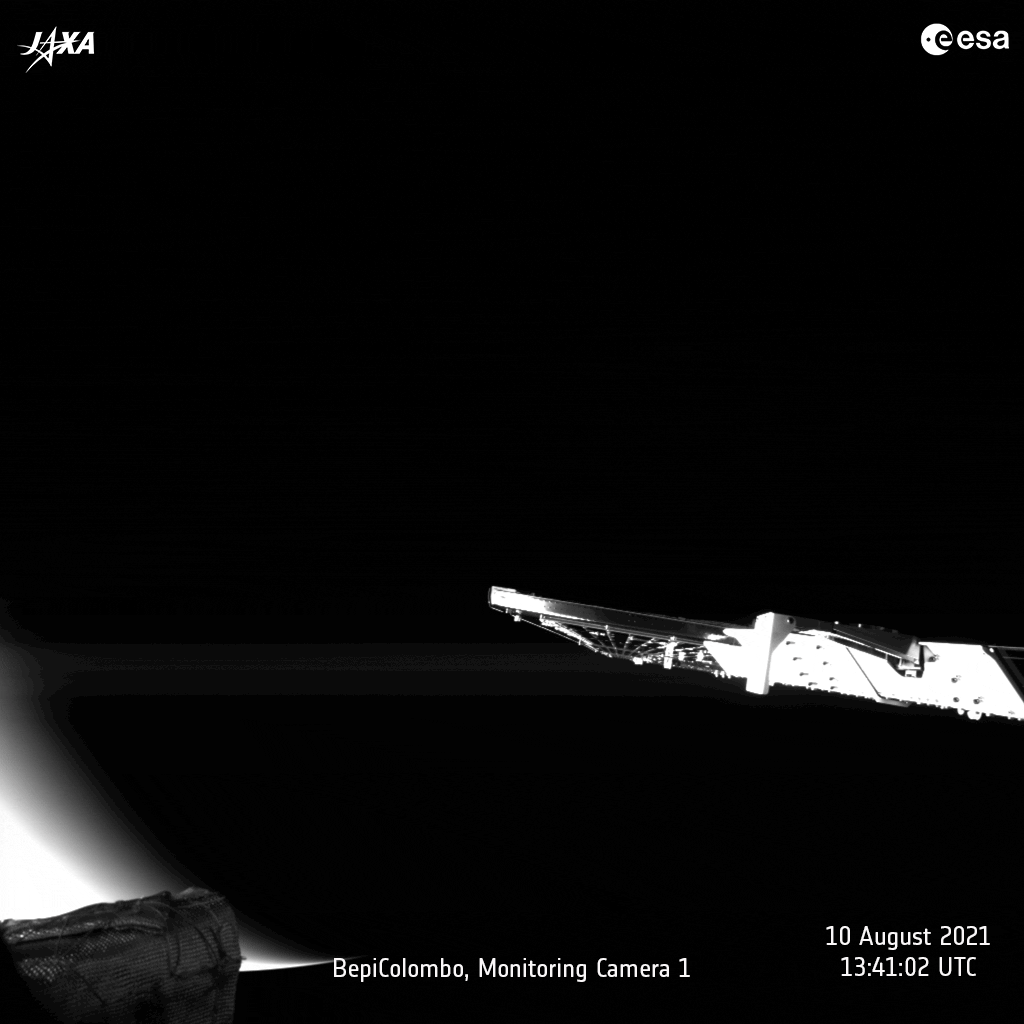Two spacecraft made historic flybys of Venus last week, and both sent back sci-fi-type views of the mysterious, cloud-shrouded planet.
The Solar Orbiter and BepiColombo spacecraft both used Venus for gravity assists within 33 hours of each other, capturing unique imagery and data during their encounters.
Solar Orbiter, a joint mission between ESA and NASA to study the Sun, sailed past Venus on August 9 at a distance of 7995 km (4967 miles). Then BepiColombo, a collaborative venture between ESA and JAXA to Mercury, skimmed past at just 552 km (343 miles) from the planet’s surface on August 10.
The image above was taken when BepiColumbo was 1,573 km from Venus.
Here’s a video of Solar Orbiter’s view, from the SoloHI imager:
The camera observed the nightside of Venus in the days before closest approach. SoloHI will be used to take images of the solar wind – the stream of charged particles constantly released from the Sun – by capturing the light scattered by electrons in the wind. In the days leading up to the Venus flyby, the telescope caught views of the bright glare of the planet’s dayside. The footage shows Venus moving across the field of view from the left, while the Sun is off camera to the upper right. The planet’s nightside, the part hidden from the Sun, appears as a dark semicircle surrounded by a bright crescent of light, ESA scientists explained.

Both flybys helped the two spacecraft reach their next destinations. BepiColombo is scheduled to reach the innermost planet of the Solar System in October 2025. The spacecraft needs flybys of Earth, Venus and then several flybys of Mercury itself, together with the spacecraft’s solar electric propulsion system, to help steer into Mercury orbit against the immense gravitational pull of the Sun.
BepiColombo is actually made of two attached orbiters: the Mercury Planetary Orbiter and the Mercury Magnetospheric Orbiter. The Planetary Orbiter will map the planet in great detail, and the Magnetospheric Orbiter will study, obviously, its magnetosphere.
This video of BepiColombo’s Venus flyby includes sonification of data recorded by the Italian Spring Accelerometer (ISA) aboard the Mercury Planetary Orbiter spacecraft. The accelerometer data was converted to frequency to be made audible to the human ear. The resulting sound is quite interesting, with the sound reflecting variations in spacecraft accelerations due to the planet’s gravity acting on the spacecraft structure, as well as effects due to rapid temperature changes, and the change in reaction wheel velocity as they work hard to compensate for these effects. The audio has been matched to the timing that the images seen in this movie were captured, in the moments after closest approach.

Solar Orbiter will make a final close Earth flyby on November 27 of this year, coming within 460 km (285 miles) before further Venus slingshots will tilt its inclination, helping the spacecraft get in the right position to get the first-ever views of the Sun’s poles, a crucial part of the mission to help us understand the Sun’s 11 year activity cycle. The beginning of the primary mission also begins in November. It will take the closest ever images of the Sun as it comes within 42 million km, and measure the composition of the solar wind.
You can read more details on the two flybys at the ESA website.
BepiColombo’s mission website.
Solar Orbiter mission website.
https://ift.tt/3yQgP5V
Science
No comments:
Post a Comment